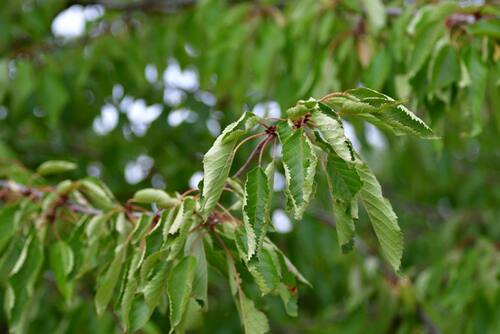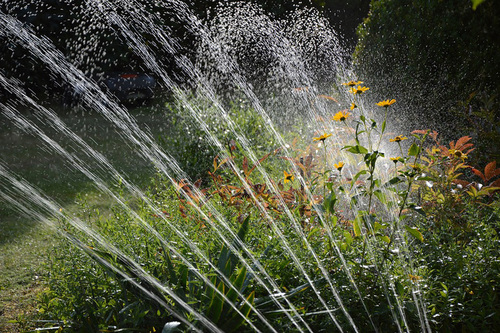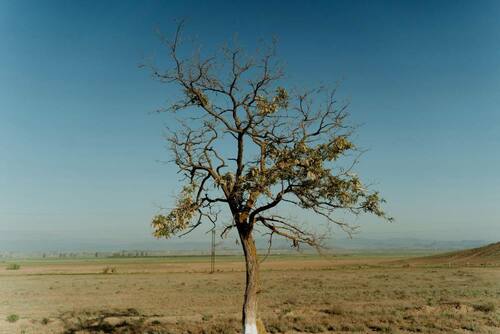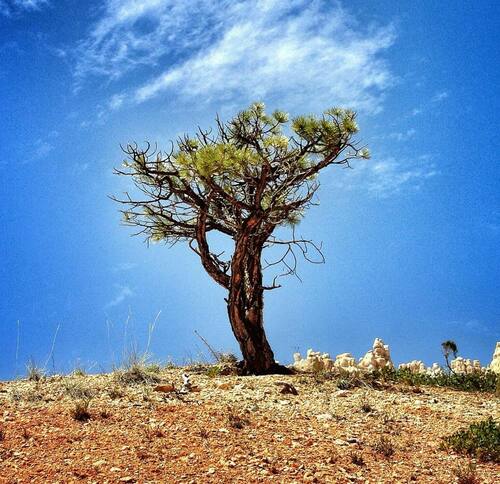A Guide to Taking Care of Your Trees During a Drought

Calaveras Reservoir - Photo by Ludwig Theodor von Ruhm on Unsplash
Tree Care Tips for Droughts
If you live in an area that experiences drought from time to time, you should have a plan in place to take care of your trees when the rain stops. Living in places like the San Francisco Bay area, where droughts are a recurring challenge, demands proactive measures to safeguard your landscape, especially the trees. Trees are not just aesthetic elements but crucial ecological assets in your garden. They provide shade, improve air quality, and enhance property value. This guide outlines a strategic approach to tree care during times of low rainfall, ensuring that your trees remain healthy and vibrant despite challenging conditions.
Drought conditions can be challenging for landscapes, particularly for trees which are vital assets in your garden. Proper care during these dry periods is crucial for maintaining the health and longevity of your trees. Here's a detailed guide on how to care for your trees when rainfall is scarce, especially pertinent to residents of the San Francisco Bay area.
Looking for Signs of Tree Stress

Leaves Curling up in Dry Conditions
Tree Care Tips for Droughts
When should you step in during a dry spell for your trees? What steps should you take to make sure they are completely watered and taken care of? Let’s get into that and more, starting with looking for signs of tree stress
Indicators of Drought Stress
Before taking any steps to care for your trees during a drought, it's essential to recognize the signs of stress caused by insufficient water. Some common symptoms include:
- Wilting Leaves: Leaves may droop, curl, or wilt, indicating a lack of water.
- Leaf Scorch: This appears as brown edges or tips on leaves, typically caused by inadequate moisture and high temperatures.
- Early Leaf Drop: Trees may shed leaves prematurely during the growing season as a survival mechanism to reduce water loss.
- Discoloration: Leaves may turn yellow or brown and become dry or brittle.
- Stunted Growth: The tree's growth may slow down significantly, with smaller leaves or shorter twig growth than normal.
- Cracking Bark: The tree’s bark might show signs of cracking or splitting, which can be a response to dehydration.
- Increased Susceptibility to Disease and Pests: Drought-stressed trees are more vulnerable to diseases and pests as their natural defenses weaken.
If you notice any of these conditions, it's essential to take timely action to help the tree recover and ensure its long-term health. If drought stress is prolonged, the damage to your trees may be irreversible. At Arborist Now, we are here to help you spot these signs and quickly address them so that your trees can recover and thrive.
Watering Trees During a Drought

Water from a Sprinkler Hydrates a Landscape - Photo by Peggy Chou on Pixabay
Deep Watering Techniques
When watering trees during a drought, the goal is to mimic the natural infusion of water they would receive from rainfall. Deep watering can be particularly effective.
- Frequency and Timing: Water deeply but infrequently to encourage deep root growth. Early morning is the best time to water to reduce evaporation losses.
- Method: Use a soaker hose or drip irrigation around the base of the tree, extending out to the edge of the tree canopy, known as the drip line. Avoid shallow sprinkling, as it does not reach the deeper roots.
Make sure when you water your trees that the moisture is reaching between 12 and 18 inches deep. Since around 90 percent of tree roots are in the first foot of soil, you want to ensure that they’re all receiving moisture. Consider using a soil probe each time you water them to ensure that it's reaching the necessary depth .

Dry Conditions are Taking a Toll on This Tree - Photo by Cottonbro Studio
Mulching for Moisture Conservation
Applying a layer of organic mulch around the tree can help retain soil moisture, regulate soil temperature, and reduce weed competition. Keep mulch a few inches away from the trunk to prevent rot and disease. Avoid using rocks or stones around the tree, as they absorb heat and can raise the temperature around the tree, causing additional moisture loss.
- Type of Mulch: Wood chips, bark, or shredded leaves are ideal choices.
- Thickness: Maintain a 2-to-4-inch layer of mulch to effectively conserve moisture and protect the roots.
The Risks of Fertilizing During Drought
Fertilizers are often perceived as a helpful boost for tree growth and health; however, they contain salts that can be detrimental under drought conditions. When water is scarce, the salts from fertilizers can accumulate in the soil, leading to a phenomenon known as "root burn." Signs of fertilizer burn include:
- Brown tips or margins on leaves
- Leaf drop or wilt
- Reduced vigor or stunted growth
- Visible salt crust on the soil surface
Recognizing these symptoms promptly can help you reduce damage and quickly implement corrective measures.
Why Pruning Matters More During Droughts
Pruning is a critical aspect of tree care throughout the year, but it becomes especially vital during drought periods. Trees stressed by drought are more vulnerable to diseases and pests, making strategic pruning crucial to maintaining their health and vitality.
Pruning should be done with care to minimize stress on the tree:
- Best Timing: Late winter or early spring is ideal, as trees are generally dormant during this time, reducing the impact of pruning on their health.
- Proper Techniques: Make clean cuts close to the branch collar to promote quick healing. Avoid tearing the bark or leaving stubs, which can lead to decay.
- Prioritizing: Focus on removing branches that pose the most significant risk to the tree's health. This includes dead or dying limbs, diseased branches, and overlapping or rubbing branches.
A Tree Growing in Very Dry Conditions - Photo by Pascal Claivaz
Our Final Thoughts on Taking Care of Your Trees During a Drought
Droughts are a reality for those living in the San Francisco Bay area, and having a plan in place for your trees is essential. By recognizing the signs of tree stress, implementing effective watering strategies, and planning for long-term health, you can ensure your trees endure and even thrive during dry spells. Remember, well-cared-for trees not only enhance the beauty of your property but also contribute positively to the environment. For more expert advice on tree care, contact Arborist Now for tailored solutions.
Originally published on May 2, 2019.






